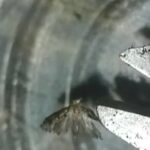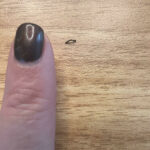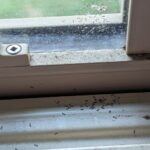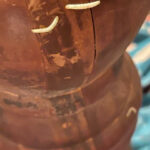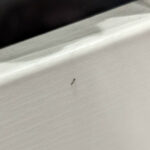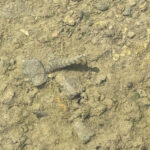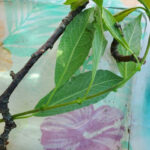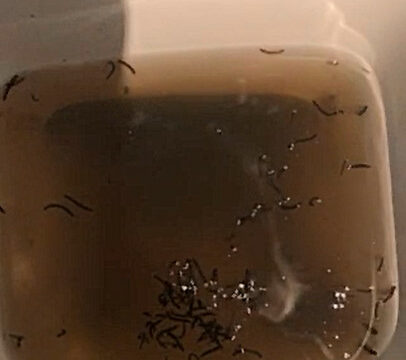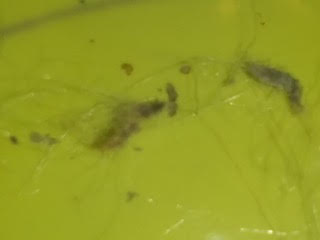
“Can you identify these larvae?” asks this reader about the large group of tiny worm-like organisms pictured below. The creatures were found “on a built-in bookcase in [her] home.”
Although our reader has “already sprayed and removed them”, she still wants “to know if [she] should be concerned.” It is understandable that anxiety can build up when one finds a horde of worm-like creatures in their home. On top of having uninvited guests in the home, all sorts of thoughts and possibilities can circulate in one’s mind about what their appearance means, and in addition to this, there lies the dreaded task of having to clear them out.
With that said, we want to assure our reader that these creatures are not anything to be concerned about. They are either armyworms or American ermine moth larvae: in any case, the creatures are newly hatched, so our reader is unlikely to find more of them in her home (though we still advise checking).
Armyworms are infamous, though not for being dangerous to humans, but for being dangerous to farms. Fall armyworms (FAW) in particular are notorious for eating and destroying countless crops, and they have been recognized as an international threat to agriculture. Armyworms are not only born in big groups, but they continue to travel as one too, hence the name. It is not uncommon to find a patch of newly-hatched armyworms in one’s home, but this is usually because the mother moth laid her eggs here for the sake of shelter, or because she got trapped in the home. It is not because they wish to infest the home, as armyworms have no real business in the home. They would much rather be outside in a garden or farm.
American ermine moth larvae also have no business inside a home. They prefer woodland environments, so their appearance in a home is likely due to the same reasons. Typically, newly hatched American ermine moth larvae will also be accompanied by clear-white eggs, which we assume to be unfertilized (since the eggs that contain larvae will typically be the same dark gray color of the larvae before hatching). These white eggs are visible, so if our reader does not see them, it is more likely that the creatures are armyworms.
In conclusion, the worm-like creatures our reader found on her bookcase are either armyworms or American ermine moth larvae. Regardless, neither species of moth larvae is harmful to humans or pets, so our reader need not fear. We hope this article proves insightful, and that it puts her mind at ease. We wish her the best.
All About Worms is always free, always reader-supported. Your tips via CashApp, Venmo, or Paypal are appreciated! Receipts will come from ISIPP Publishing.
You might also find these guys interesting!





